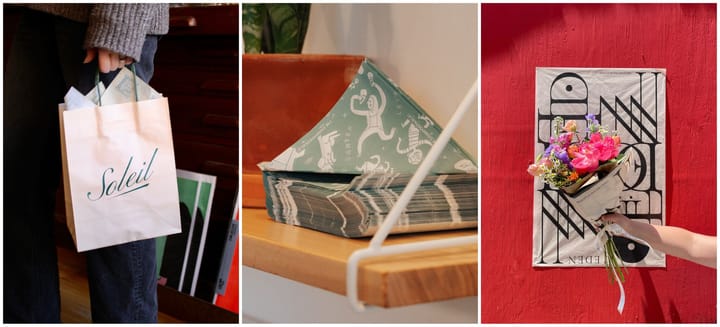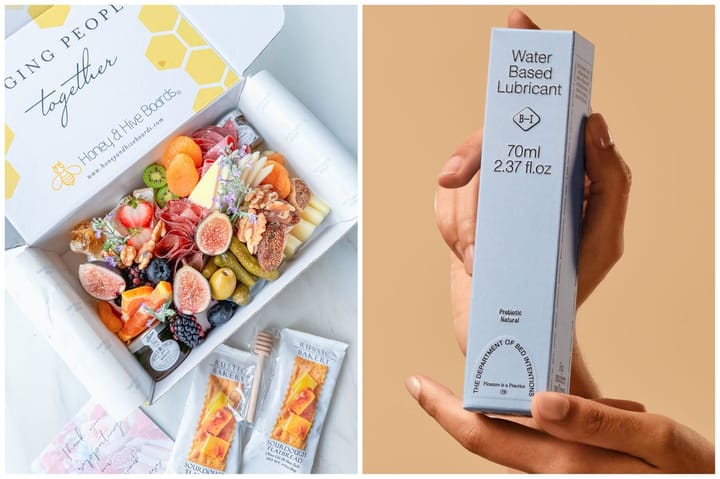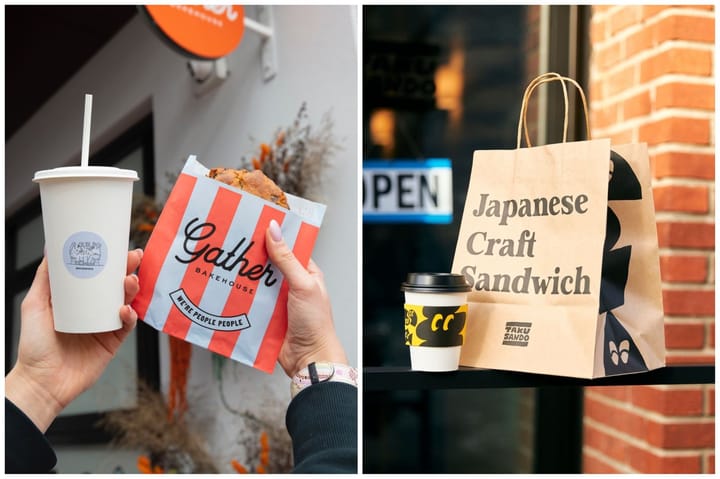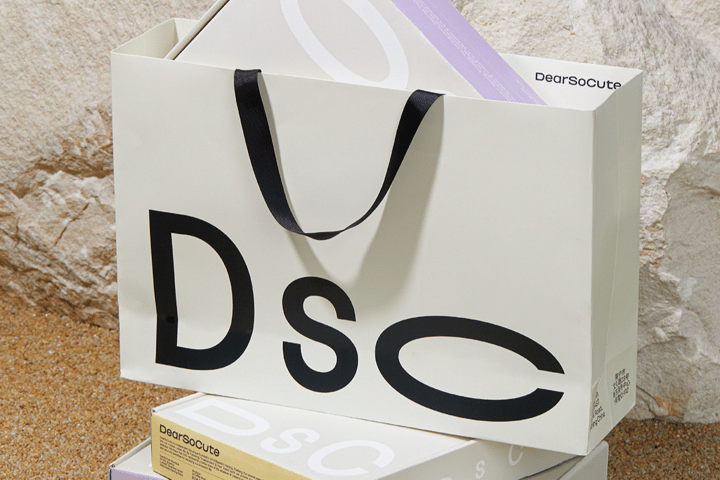
The Ultimate Paper Weight Guide
What do GSM, LBS, and thickness mean in paper? Read our ultimate paper weight guide and choose the right type of paper for your next project.
By noissue — 10 February, 2025

"Wait... is GSM heavier than LBS? And what's a 'point' got to do with anything?" If you've ever found yourself puzzling over paper weight specifications, you're in good company. From experienced designers to new brand owners, everyone's been stumped by those mysterious numbers and abbreviations.
That's why we've created this handy paper weight guide! Whether you're launching a new product line or refreshing your brand's packaging, understanding paper weight is key to making smart choices for your business (and the planet!).
How is paper weight measured?

Let's tackle those different paper weights, shall we? No complex formulas or industry jargon – just clear, practical know-how to help you make the right choice.
GSM (Grams per Square Meter)
- Uses the metric system
- The global standard
- Tells you exactly how much one square meter of paper weighs
- Example: A sheet of 80 GSM printer paper weighs 80 grams per square meter
LBS (Pounds)
- Traditional US system
- Measures how much 500 sheets weigh at a standard size
- Different base sheet sizes for text and cover stocks
- Example: 20lb copy paper is standard for office use
Points (pts)
- Measures thickness, not weight
- One point = 1/1000 inch
- Used for products where thickness matters more than weight
- Example: 10pt business card stock is 0.010 inches thick
Pro tip: When you see both weight and point measurements (like "100lb, 10pt cover stock"), it tells you how heavy and thick the paper is!
Paper weight vs. paper thickness

Weight isn't the whole story when it comes to paper. Two papers with the same weight can have noticeably thicker or thinner profiles. While GSM and LBS tell you how heavy paper is, points measure the paper's actual thickness. This distinction matters more than you might think.
What determines a paper's thickness? Several factors affect how paper types perform:
- Paper density: How tightly packed the fibers are.
- Material composition: Recycled content changes the structure.
- Surface treatments: Coatings can add bulk.
- Paper-making process: Different techniques create different thicknesses.
What is LBS, and why does it matter?
LBS (pounds) refers to how much 500 sheets of paper weigh at their basic size. Sounds complicated? That's because it is! This system dates back to the early days of paper making when each type of paper had a standard sheet size.
Common conversions from LBS to GSM:
- 20 lb bond paper ≈ 75 GSM
- 24 lb bond paper ≈ 90 GSM
- 32 lb bond paper ≈ 120 GSM
While LBS is still used in North America, GSM has become the global standard for good reason – it's more intuitive and consistent across different paper types.
What is GSM, and why does it matter?
GSM (grams per square meter) is a beautifully simple paper measurement: it tells you exactly how many grams one square meter of a standard sheet of paper weighs. No complex calculations needed.
Here's how GSM affects your packaging:
- Higher GSM means more durability
- Print quality will vary based on paper weight
- Shipping costs depend on your choice
- Customer experience changes with weight
Ultra Light-Weight Papers (10-35 GSM)

At 10-35 GSM, these ultra light-weight papers might be thin, but they're specialists at creating those magical unboxing moments.
Best used for:
- Tissue paper
- Inner wrapping elements
- Delicate decorative touches
Printing considerations:
- Limited to specialized printing processes
- Not suitable for double-sided printing
- Colors may show through
- Requires gentle handling during printing
- Best for simple, one- or two-color designs
noissue custom tissue paper (17 GSM or 28 GSM) and compostable kraft paper (30 GSM) add a special touch without weighing down your packaging or environmental impact.
Light-weight papers (35-120 GSM)

At 35-120 GSM, light-weight papers are perfect for everyday brand touchpoints.
Best used for:
- Food wrapping
- Newspapers
- Promotional flyers
- Product inserts
- Wrapping sheets
Printing considerations:
- Ideal for digital printing and basic offset printing
- Can handle simple double-sided printing
- May wrinkle if ink coverage is too heavy
- Works best with lighter color applications
- Avoid dark, full-bleed designs
Check out noissue food paper packaging (38 GSM to 40 GSM)—FDA-approved and ready to make your food presentation shine!
Medium-weight papers (120-200 GSM)

This type of paper is used for most commercial printing projects. It delivers that satisfying, substantial feel while maintaining excellent print quality and versatility.
Best used for:
- Marketing materials
- Booklet covers and brochures
- Letterheads
Printing considerations:
- Perfect for most printing methods
- Excellent for double-sided printing
- Can handle full color and heavy ink coverage
- Good for folding and scoring
- Suitable for specialty finishes like spot UV or foiling
Browse noissue's medium-weight paper options, including our custom paper bags (93-120 GSM), custom paper shopping bags (93 GSM), and stickers, labels and tape (40-100 GSM).
Heavy-weight papers (200+ GSM)

When your brand demands presence and durability, paper weight at 200+ GSM delivers. This is the weight class that turns packaging into a deluxe experience.
Best used for:
- Luxury retail packaging
- Premium business cards and stationery
- High-end promotional materials
- Statement packaging that needs to maintain shape
Printing considerations:
- May require specialized printing equipment
- Excellent for embossing and debossing
- Can handle premium finishes like metallic inks
- May need scoring before folding to prevent cracking
- Perfect for special effects like textured printing
Shop noissue's custom premium retail bags at 200 GSM–where luxury meets sustainability for your brand's boldest statements.
Choosing the right paper weight for your brand

Ready to choose the right paper type for your brand and print job?
Here's what to consider:
- Project type: Do you need tissue paper for boutique wrapping, thicker paper for takeout orders, or durable boxes for shipping? Each use demands a particular paper weight.
- Usage requirements: Will your printed materials need to withstand handling, moisture, or multiple uses?
- Print design: Your design and printing needs help determine the best paper type and weight.
- Brand impact: Does your paper choice create the right impression for your brand story?
🎁 That's a Wrap!
Generic packaging? That's old news. With our handy paper weight guide, you can create custom packaging that tells your brand story. Explore noissue's range of sustainable packaging solutions that look good and do good. From tissue paper to premium retail bags, we've got the perfect paper for every weight class.
Looking for creative packaging ideas for your next project? Check out our Inspo page to see how other brands are making waves with their sustainable packaging choices.